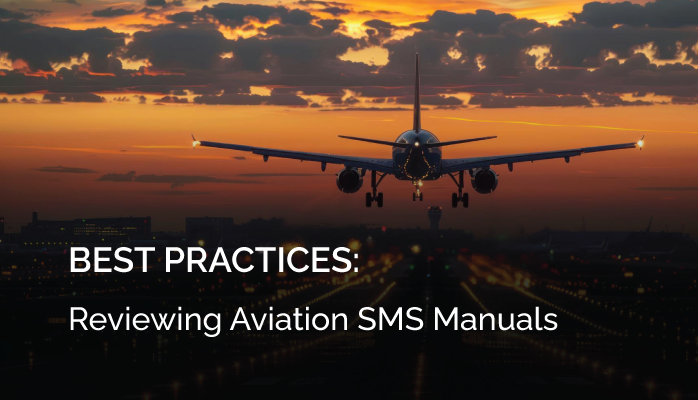When Should I Review Our SMS Manual?

It's very important to review SMS Manuals.
The most common audit finding is that the operator is not conducting operations as stated in their SMS manual.
Furthermore, your manual is only as useful as the information it contains. If the information is out of date, employees will lose trust in it. This undermines the safety culture you've worked to build.
Review your manual at regular intervals. Annual reviews are best practice, but some operators go as long as 3 years between reviews.
Outside of regular reviews, you should also review your manual when:
- regulations change;
- your operational processes change; or
- there is an incident
Related Aviation SMS Manual Articles
- How to Create Your Aviation SMS Manual
- Tips Writing SMS Manuals With Aviation Safety Database Solutions
- 3 Best Practices for Your Aviation SMS Manual
What Should I Look For?
When reviewing an SMS manual, here are a few things to consider.
Is the policy or procedure implemented as intended? Check in with the people who are affected by relevant policies and procedures in their day-to-day work. Does the documentation work in practice the way that it's outlined? If not, investigate the reasons why. Is it realistic to implement the policy or procedure as intended? Are changes necessary?
Is it working the way it's supposed to? Does the policy or risk management procedure do what you hoped it would? If not, is it helpful? Once again, check with those who use the manual the most and get their input.
Is the information current and relevant? This may be the most important question. If the information is out of date or irrelevant, your employees will stop trusting the manual. Make sure to update any out-of-date information and remove irrelevant details.
Related Aviation Risk Management Articles
- How to Overcome Iceberg of Ignorance in Aviation SMS
- How to Tell if Your Risk Management Tools Are Good
- Stuck on Lagging Indicators in Your Aviation Risk Management Program? Here’s Why.
How to Update the Manual
Once you've decided to update or change part of the SMS manual, take it back to the drawing board. Identify the stakeholders in the process and involve as many as possible. When you include stakeholders, you save time in the long run.
Document the comments from stakeholders, as well as the changes you plan to make. Use this information and revise your manual as needed.
In some cases, your civil aviation authority must approve changes to the SMS manual. If necessary, submit your changes before distributing the new manual. Also, remember to get any internal approvals you may need.
Once you've revised your manual and gotten the necessary approvals, you can distribute it. Your document management protocols should include a strategy for this.
Finally, update your training materials to reflect changes to policies and procedures. Your training should be as trustworthy as your manual.
Related Aviation SMS Training Articles
- What Is Aviation Safety Training
- Best Ways to Automate Aviation Safety Training for Initial/Recurrent Requirements (Free Resources)
- Why Employees Can’t Stand Aviation SMS Training
Share Your Experiences
When was the last time you reviewed the SMS manual? Did you find anything surprising? Tell us about your experiences in the comments below!
Your SMS manual will be scrutinized heavily in your next SMS audit. What else should you expect in your next SMS audit? Here are four audit checklists to help you prepare.
Last updated August 2024.





